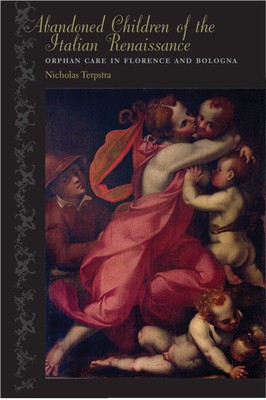
- We will send in 10–14 business days.
- Author: Nicholas Terpstra
- Publisher: Johns Hopkins University Press
- ISBN-10: 1421439247
- ISBN-13: 9781421439242
- Format: 15 x 22.6 x 2.5 cm, softcover
- Language: English
- SAVE -10% with code: EXTRA
Reviews
Description
In the early development of the modern Italian state, individual orphanages were a reflection of the intertwining of politics and charity.
Nearly half of the children who lived in the cities of the late Italian Renaissance were under fifteen years of age. Grinding poverty, unstable families, and the death of a parent could make caring for these young children a burden. Many were abandoned, others orphaned. At a time when political rulers fashioned themselves as the "fathers" of society, these cast-off children presented a very immediate challenge and opportunity.
In Bologna and Florence, government and private institutions pioneered orphanages to care for the growing number of homeless children. Nicholas Terpstra discusses the founding and management of these institutions, the procedures for placing children into them, the children's daily routine and education, and finally their departure from these homes. He explores the role of the city-state and considers why Bologna and Florence took different paths in operating the orphanages. Terpstra finds that Bologna's orphanages were better run, looked after the children more effectively, and were more successful in returning their wards to society as productive members of the city's economy. Florence's orphanages were larger and harsher, and made little attempt to reintegrate children into society.
Based on extensive archival research and individual stories, Abandoned Children of the Italian Renaissance demonstrates how gender and class shaped individual orphanages in each city's network and how politics, charity, and economics intertwined in the development of the early modern state.
EXTRA 10 % discount with code: EXTRA
The promotion ends in 18d.19:04:30
The discount code is valid when purchasing from 10 €. Discounts do not stack.
- Author: Nicholas Terpstra
- Publisher: Johns Hopkins University Press
- ISBN-10: 1421439247
- ISBN-13: 9781421439242
- Format: 15 x 22.6 x 2.5 cm, softcover
- Language: English English
In the early development of the modern Italian state, individual orphanages were a reflection of the intertwining of politics and charity.
Nearly half of the children who lived in the cities of the late Italian Renaissance were under fifteen years of age. Grinding poverty, unstable families, and the death of a parent could make caring for these young children a burden. Many were abandoned, others orphaned. At a time when political rulers fashioned themselves as the "fathers" of society, these cast-off children presented a very immediate challenge and opportunity.
In Bologna and Florence, government and private institutions pioneered orphanages to care for the growing number of homeless children. Nicholas Terpstra discusses the founding and management of these institutions, the procedures for placing children into them, the children's daily routine and education, and finally their departure from these homes. He explores the role of the city-state and considers why Bologna and Florence took different paths in operating the orphanages. Terpstra finds that Bologna's orphanages were better run, looked after the children more effectively, and were more successful in returning their wards to society as productive members of the city's economy. Florence's orphanages were larger and harsher, and made little attempt to reintegrate children into society.
Based on extensive archival research and individual stories, Abandoned Children of the Italian Renaissance demonstrates how gender and class shaped individual orphanages in each city's network and how politics, charity, and economics intertwined in the development of the early modern state.


Reviews